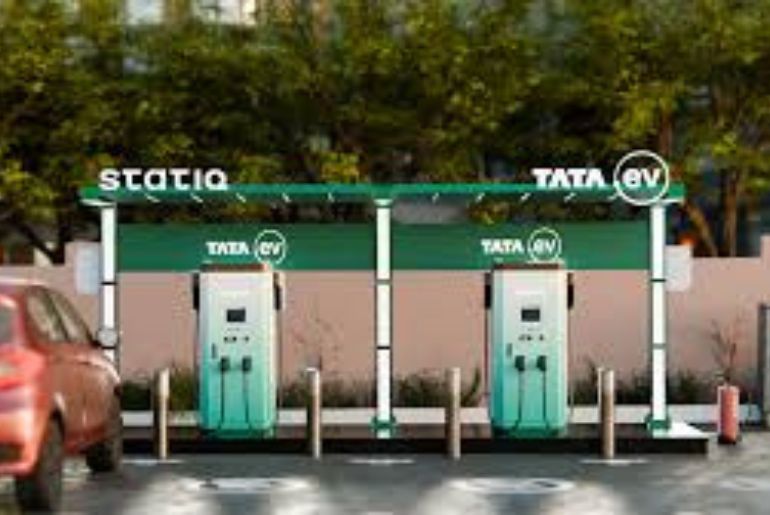The automaker aims to expand its public charging points to over 1 lakh.
In an effort to solve issues with range anxiety and insufficient charging infrastructure, Tata Motors intends to increase its electric vehicle charging infrastructure fivefold by the end of this decade.
According to a business presentation, the manufacturer wants to increase the number of public charging stations from the existing 22,000 to over 1 lakh, with a goal of more than 2,000 cities and towns for fast charging.
With ultra-fast charging guns ranging from 120 kW to 400 kW, the Mega Charger network will expand to over 1,000 places. With the assistance of ChargeZone and Statiq, the carmaker recently installed its first ten TATA.ev Mega Chargers in urban areas and along significant highway routes.
Tata Motors announced earlier this year that it would work with oil marketing firms and charge point operators to create 30,000 new public charging stations by 2027 as part of its “Open Collaboration 2.0” plan. Additionally, 500 Mega Chargers and four-bay superfast chargers will be added as part of the scheme, making them available to electric cars of any make.
By the end of this decade, the carmaker also intends to increase the number of home charging stations from the present 1.60 lakh to over 10 lakh.
The largest obstacle to the nation’s adoption of electric vehicles has been the lack of adequate charging infrastructure. In India, there were more than 25,202 public EV charging points as of 2024. India still lacks the charging infrastructure of many developed EV markets, though.
Tata Motors, the biggest manufacturer of electric cars in India’s passenger vehicle sector, is aware of a significant change in the market. As the early adopter phase comes to an end, manufacturers think that in order to maintain growing momentum, more attention must be paid to expanding the EV market.
Additionally, Tata Motors’ market share in the EV market has dropped significantly to about 55% from 80–85% a few years ago due to growing competition from M&M’s new-generation EVs, such as the BE6 and XUV9e, and JSW MG Motor’s Windsor EV.
“Our leadership will be strengthened by our long-term EV plan. “EV volumes will be strengthened by bespoke EV products with even greater mainstreaming actions,” the business stated. In an effort to mainstream EVs, the automaker is preparing new nameplates and expanding its current line of EV products.
Three models make up Tata Motors’ EV portfolio: the entry-level Tiago.ev, the mid-segment Nexon.ev, and the fleet-segment Xpress.T. With the introduction of the electrified Harrier SUV last week, the carmaker hopes to make up some ground by aiming for a more upscale SUV market.
In addition, Tata Motors is getting ready to introduce its high-end EV brand, Avinya, in 2027, signalling a strategic shift towards cutting-edge EV architecture, radical design, and luxury electric mobility. The company has signed a Memorandum of Understanding with Jaguar Land Rover to share the EMA architecture in order to launch the Avinya EVs.
By the end of this decade, Tata Motors plans to launch two more EV nameplates in addition to the two models sold under the Avinya and Sierra brands. Between FY25 and FY30, the company has pledged to investing ₹16,000–18,000 crore in the electric car sector.

